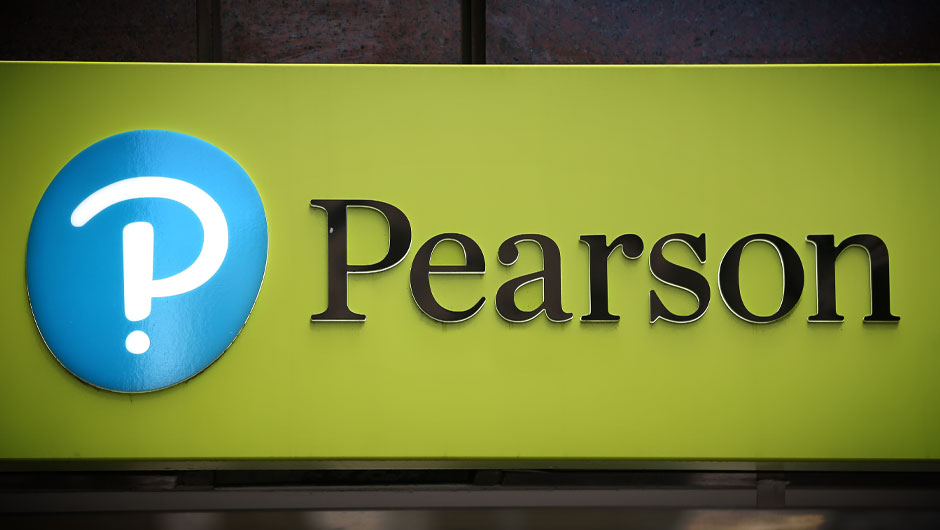
A catalyst for change

From reinventing processes with AI and machine learning to saving an impressive £2m in interest costs, the transformation undertaken by Pearson’s treasury is nothing if not ambitious.
“In the last two years, my team have had to do a complete volte-face in terms of how they operate,” says James Kelly, Pearson’s Group Treasurer, summarising the transformation project he has overseen. “However we’ve been able to achieve a cultural change, and there’s an understanding of what we’re trying to do, and a recognition that we’ve done it well.”

Kelly himself has been the catalyst for this change. When he joined Pearson in January 2017, he had a clear goal, supported by the CFO: to run a centralised treasury function. Getting to this point meant devising a balance sheet strategy, agreeing an updated set of policies and procedures – and ultimately, converting Pearson’s treasury from a head office function to a full-service in-house bank which prepares forecasts, manages cash and trades FX on behalf of all group companies.
Achieving this transformation also meant implementing some major process changes along the way. At the outset, only 350 of the company’s 600 bank accounts were included in the legacy pooling and sweeping mechanisms, as sweeping the remainder was not economical. The treasury was also using ten different bank platforms, and was only receiving bank statements from the company’s major bank accounts. In addition, the cash forecasting process involved input from 28 different teams and individuals.
Gaining confidence
Making heavy use of artificial intelligence, machine learning and robotic process automation, the treasury team set about automating most of its key processes. “AI and machine learning software was used for cash and FX forecasts, and RPA was used for the basic decision-making around cash placement, using our treasury management system to link straight through to trading platforms,” says Kelly. He notes that where possible, the treasury team co-ordinated the steps of the project with the concurrent roll-out of the company’s new ERP system.
Unsurprisingly for a project of this scope, a number of challenges had to be overcome along the way. “The key challenge was that it required a complete shift in all our processes and ways of working,” says Kelly. “This required a cultural shift for both the operating companies and the central team.”
The team rose to the challenge, drawing upon their strong technical skills to devise “practical and implementable” solutions which were then included in the process blueprints for future roll outs. “The early implementations were slow and painstaking as we proved the model to ourselves and the operating companies. Each solution was rigorously tested, and once we started to act on behalf of our first operating companies, the confidence of the team began to increase as they saw how the model could work,” explains Kelly. “This, in turn, meant that when we went to the next round of companies, they had heard that we had been successful – and so had more confidence.”

Benefits of the solution
Under the new system, over 90% of the company’s bank accounts on SWIFT have been connected to the TMS, with the remainder due to follow soon. Cash sweeps are automatically carried out on accounts on the TMS based on balances forecast using RPA, while basic investment and FX decisions are also built into the TMS using RPA.
The resulting processes have enabled Pearson’s treasury to repatriate small balances amounting to over £100m. These balances have been used to repay debt, saving over £2m in interest. In addition, Kelly says the work of ten people is now being done by five – resulting in a “saving net of the cost of our cash forecasting software of around £200,000” on top of the interest savings.
Other achievements include a 30% reduction in the notional value of FX transactions, achieved by netting offsetting exposures which hadn’t previously been visible to the team. “The biggest benefit here is around certainty,” says Kelly, explaining that as well as saving transaction costs, the treasury is able to avoid introducing additional FX volatility – which can occur if the company repeatedly buys and sells a particular currency at different rates.
Taking stock
By any standards, this is an ambitious transformation project. As Kelly points out, “The scale and pace of the transformation, and the use of cutting-edge technology used by only a handful of treasuries, mean it is unlikely that any other treasury will have transformed so much and so quickly in a large, well-established business.” Looking forward, Kelly has further plans to explore the use of innovative technology, such as the use of blockchain in cross-border payment settlements and the use of advanced AI to optimise treasury placements.
In the meantime, Kelly emphasises the importance of ensuring key stakeholders such as IT are available when needed – meaning that a well-documented timeline and plan are needed to get everything off to a good start. “After that, it’s good to be flexible,” he concludes. “Just as no battle plan survives first contact with the enemy, no new deployment plan survives first contact with other groups of stakeholders – there’s always something new to consider!”
Hear more from Pearson and all our other EuroFinance Award Winners at International Treasury Management in Copenhagen
